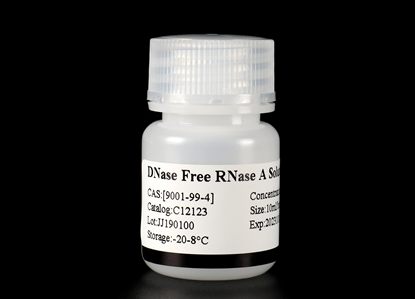Introduction
RNase A is an endoribonuclease that specifically degrades single-stranded RNA at C and U residues. It cleaves the phosphodiester bond between the 5'-ribose of a nucleotide and the phosphategroup attached to the 3'-ribose of an adjacent pyrimidine nucleotide. The resulting 2',3'-cyclic phosphate is hydrolyzed to the corresponding 3'-nucleoside phosphate. The highest activity is exhibited with single-stranded RNA. RNase A is a single chain polypeptide containing 4 disulfide bridges.
A major application for RNase A is the removal of RNA from preparations of plasmid DNA. The enzyme is active under a wide range of reaction conditions. At low salt concentrations (0 to 100 mM NaCl), RNase A cleaves single-stranded and double-stranded RNA as well as the RNA strand in RNA-DNA hybrids. However, at NaCl concentrations of 0.3 M or higher, RNase A specifically cleaves single-stranded RNA.



